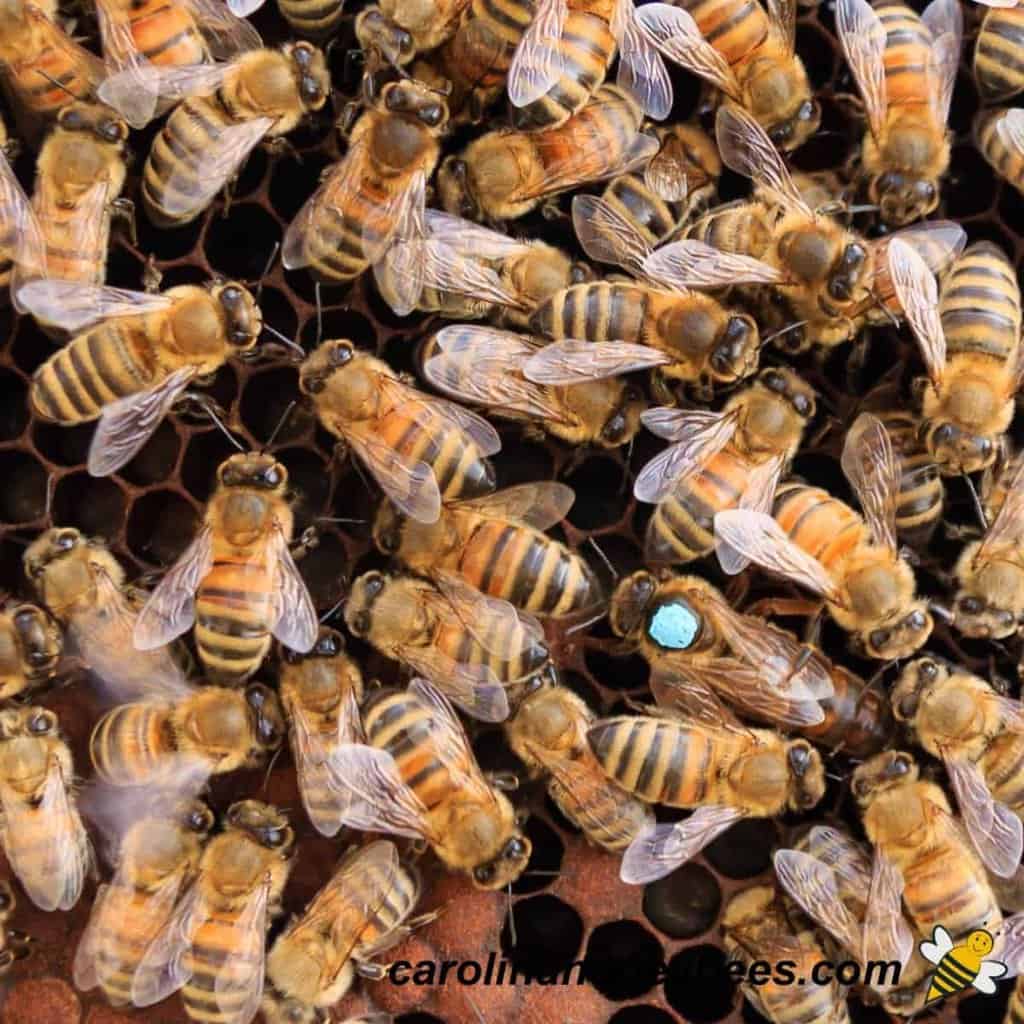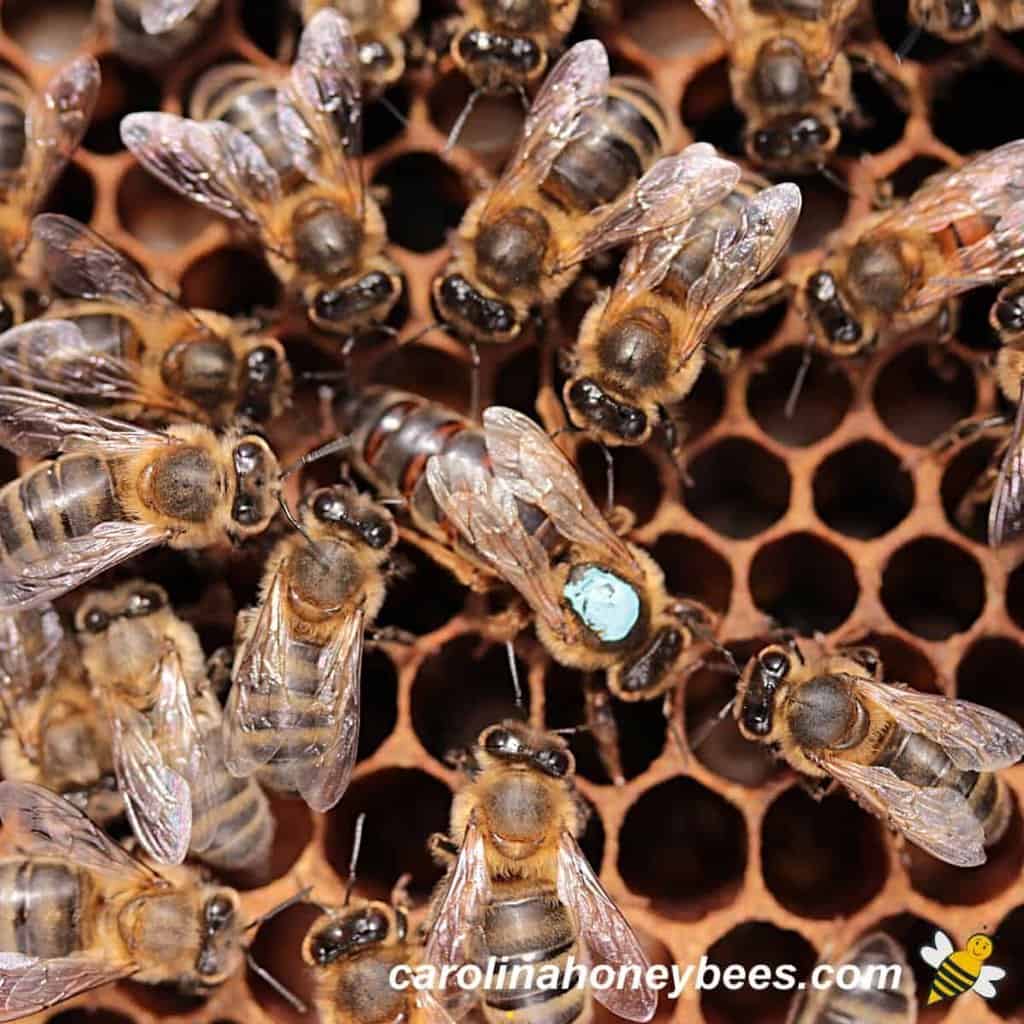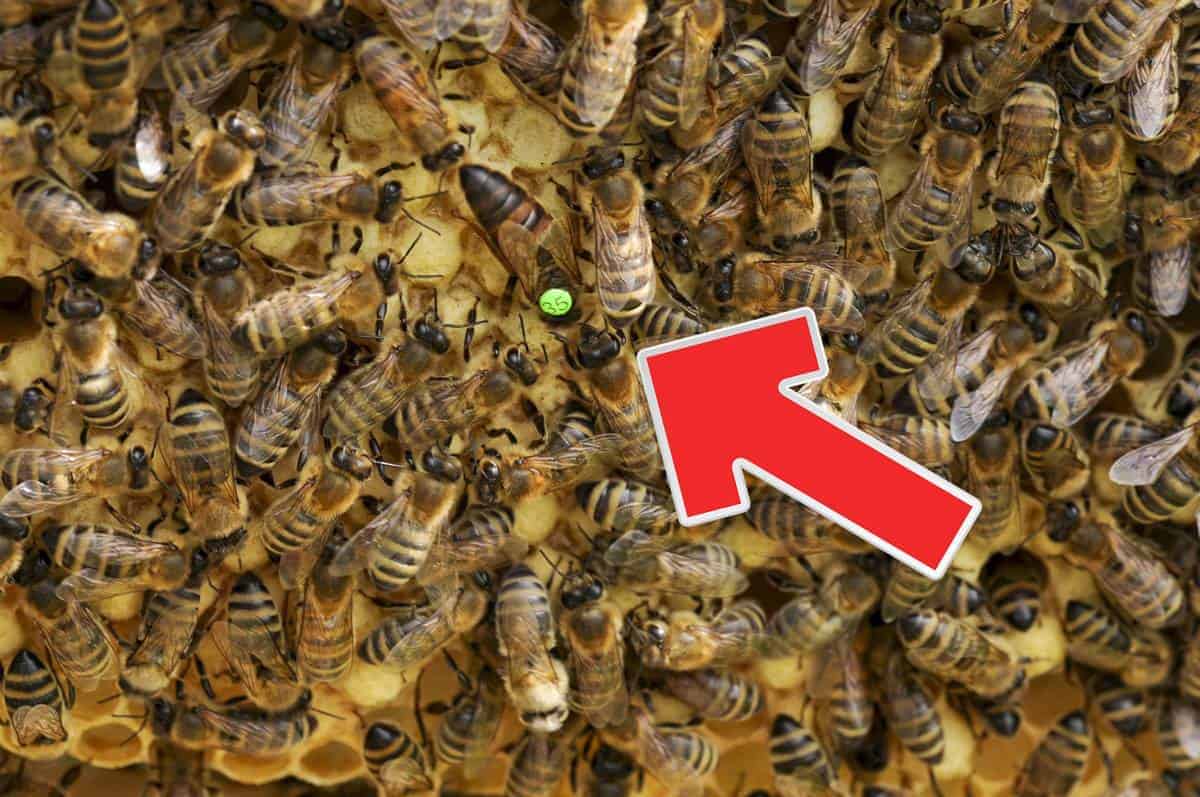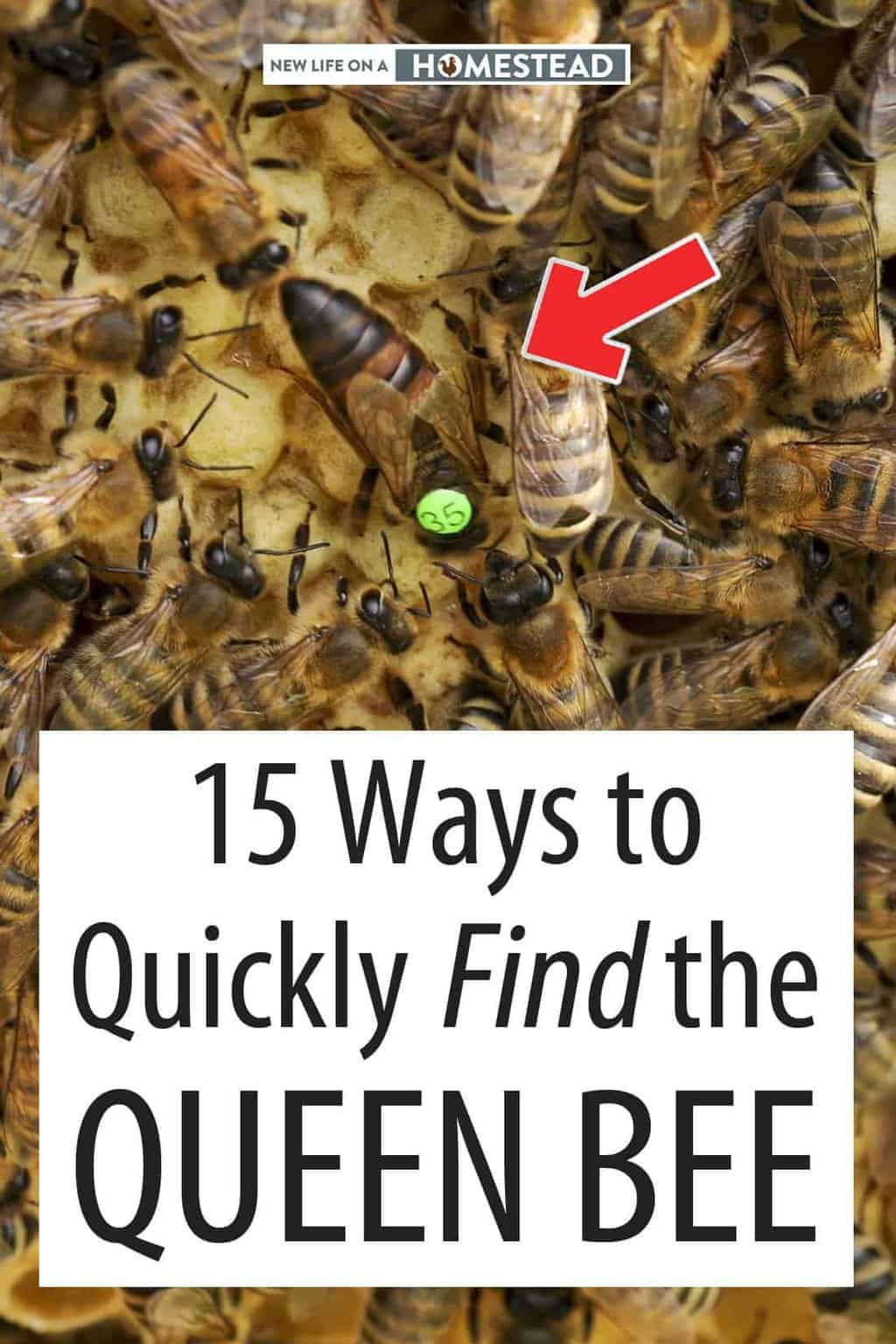If you are an aspiring beekeeper, you may be wondering how to spot a queen bee. A queen bee is the most important member of the colony, as she is responsible for reproducing and ensuring the health of the colony. Fortunately, spotting a queen bee is relatively simple with the right knowledge and tools. In this article, we will provide tips for the aspiring beekeeper on how to spot a queen bee.
What is a Queen Bee?

A queen bee is the most important bee in a honeybee colony. She is the only bee that can lay eggs, so she is essential for the colony to survive. The queen bee is usually larger than the other bees, has a longer abdomen, and may have a darker color. She lives for several years and can lay up to 2000 eggs a day.
How to Spot a Queen Bee
- Look for a larger bee with a longer abdomen
- Check for a darker color
- Observe her behavior: she will often be surrounded by workers and drones
- See if she is laying eggs
A queen bee is vital for a healthy honeybee colony, so it is important for the aspiring beekeeper to be able to identify and spot a queen bee.
How Does a Queen Bee Look Like?

Size
Queen bees are the largest bee in the hive and are usually twice the size of regular worker bees. They can be easily distinguished from the other bees by their size.
Color
Queen bees are usually darker in color than the rest of the bees, and have a golden sheen on their bodies.
Other Distinguishing Features
Queen bees also have a longer abdomen, thicker antennae and they have a stinger which is used to defend the hive. Furthermore, they are the only bees in the hive that can lay eggs.
To identify the queen bee, look for the largest bee in the hive and check for the distinguishing features mentioned above. Also, look for the bees that are laying eggs as these are the queen bees.
How to Spot a Queen Bee

Where to Look
The queen bee is usually located at the center of the hive. If there is no queen bee present, the hive will not be able to produce honey. To spot the queen, look for the largest bee in the hive. She has a longer abdomen than the other bees and may have a different color.
When to Look
The best time to look for the queen bee is during the day, when the bees are most active. Make sure you are wearing protective clothing and use a smoker to calm the bees.
Tools to Help
To make it easier to spot the queen, use a queen marker. This is a special marker pen that you can use to mark the queen’s back with a unique color. This will help you to easily identify her the next time you look. You can also use a hive tool to gently remove the frames and inspect them for the queen.
If you’re still having trouble finding the queen, it’s worth asking an experienced beekeeper for help. They can show you what does the queen honey bee look like and demonstrate the best techniques for spotting her.
How to Identify the Queen Bee
Behavior
The queen bee is the leader of the hive and the only bee capable of laying eggs. She is the most important bee in the colony, so it is important to be able to identify her. The queen bee can be identified by her behaviors, which are distinct from the other bees. She will be larger than the other bees and will often be seen at the center of the hive, surrounded by worker bees. The queen’s wings will be shorter than the workers’, and she will be the only bee that does not have a pollen sac.
Markings
The queen bee can also be identified by her physical markings. She will have a yellow dot on her back, which is known as a “queen spot.” She will also have a longer, darker abdomen than the worker bees. Additionally, the queen will have a longer thorax than the other bees, and her antennae will be longer and more curved.
Identifying the queen bee is an important skill for any aspiring beekeeper and is essential for the health and productivity of the hive. With these tips, you should be able to easily spot the queen bee and ensure that your hive is well managed.
Frequently Asked Questions
How can I tell if my hive has a Queen Bee?
There are several methods to determine if a hive has a Queen Bee. The first is to observe the activity of the bees. If the hive is active and there are many bees flying in and out, it is likely that the hive has a Queen Bee. Other signs include a loud buzzing sound coming from the hive and a pheromone smell. A beekeeper can also check for eggs or larvae in the cells – if they are present, the hive has a Queen Bee. Finally, if the beekeeper opens the hive and looks at the bees, a Queen Bee will be larger than the other bees and will have a marking on her back.
What are some signs that I can look out for to tell if a queen bee is present in my hive?
1. Brood Pattern: A hive with a queen bee present will have a distinct brood pattern, which consists of an even distribution of both capped and uncapped cells across the frames.
2. Abundance of Bees: A hive with a queen bee present will have an abundance of bees throughout the hive.
3. Queen Cells: While the presence of queen cells is not necessarily indicative of a queen bee being present, it is a good indicator that the hive may have a queen.
4. Queen Spotting: Spotting the queen is the best way to confirm a queen bee’s presence. The queen bee is larger than the worker bees and has a different shaped abdomen.
5. Bee Behaviour: The worker bees will behave differently when a queen bee is present. They will be more active and have a stronger defensive instinct.
How Often Should I Check for a Queen Bee?
It is important to check the hive frequently to ensure that the queen bee is still present, and the colony is healthy. Generally, beekeepers should check for a queen bee every 3-4 weeks, especially in the spring and early summer when the colony is most active. During the fall and winter, the checking schedule can be reduced to once every 6-8 weeks.
What should I do if I can’t find the Queen Bee in my Hive?
Check the Brood Cells: Queen bees lay eggs in the brood cells that make up the comb. To find her, look for eggs or larvae in the cells.
Look for the Queen Marker: Many beekeepers mark their queens for easy identification. If the queen is marked, look for the marking on the bee.
Look for Behavioural Changes: If the queen is missing, the other bees may become agitated. This is because they are aware that something is wrong and they are trying to find her.
Check the Entrance to the Hive: If the queen is missing, she may have wandered outside the hive. Check the entrance to the hive to see if you can spot her.
Check the Surrounding Area: If you cannot find the queen inside the hive, look for her in the surrounding area. She may have left the hive in search of food or a better place to lay her eggs.
Check for Swarming: If the queen is missing, she may have been part of a swarm. Look for a cluster of bees near the hive. If you see one, you may have found the missing queen.
Do I Need to Purchase a Queen Bee for My Hive?
The answer is yes – a healthy and productive bee hive must have a queen bee. The queen bee is essential for the growth and development of a bee colony, as she is solely responsible for the production of new worker bees. Without a queen bee, the bee colony will not be able to reproduce, and will eventually die off. If a beekeeper does not have a queen bee in their hive, they should purchase one from a reputable bee breeder or beekeeping supplier.
Conclusion
Identifying the queen bee is an essential skill for any beekeeper. A queen bee is usually larger than the other bees, has a longer abdomen and has a distinct marking on her thorax. These tips can help you spot a queen bee in your hive. Keeping a close watch on the queen bee and her activities is important for the health of your hive.
